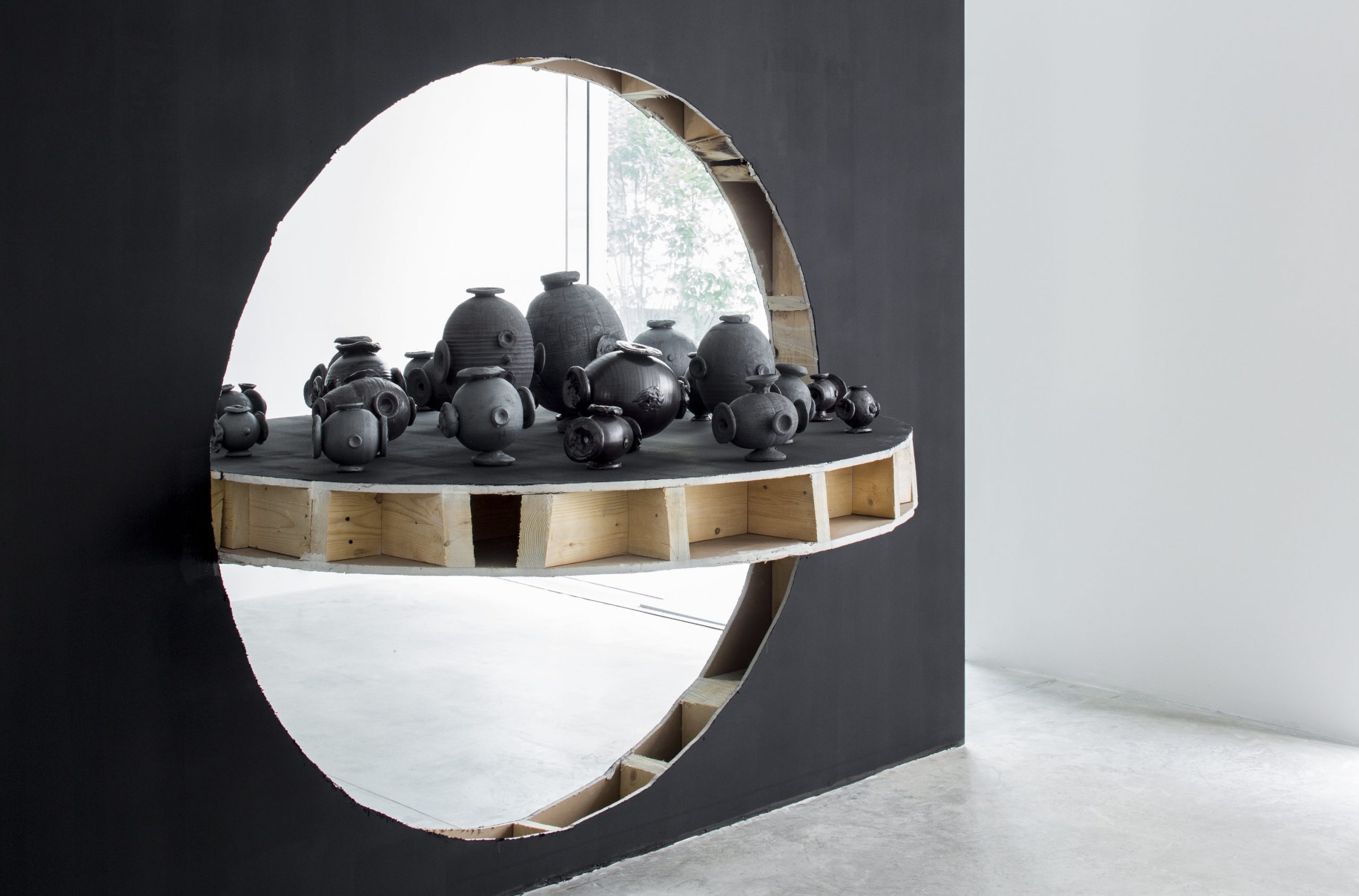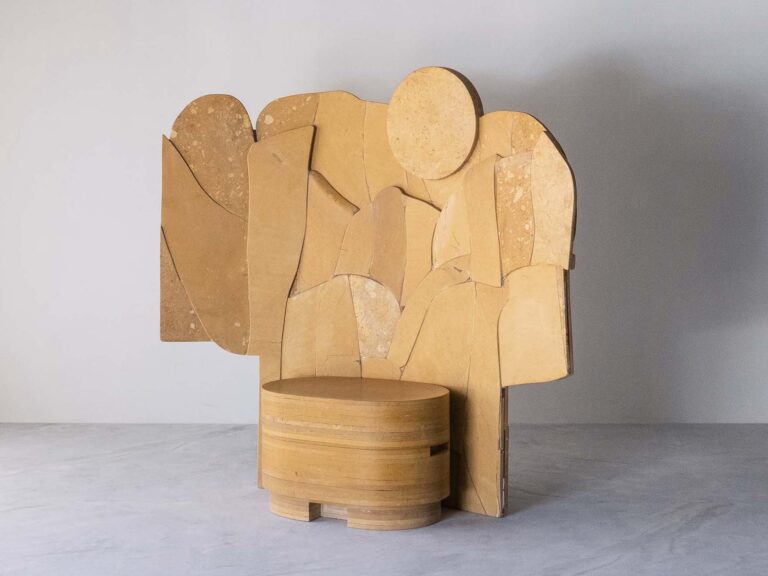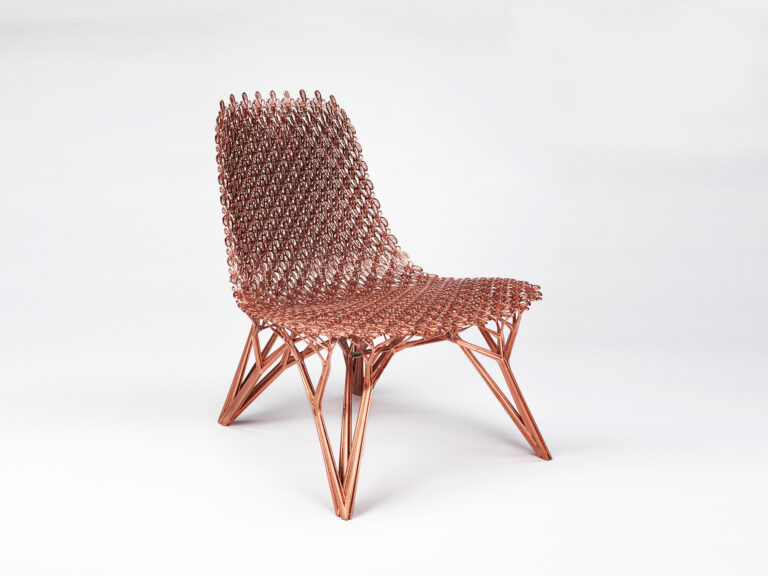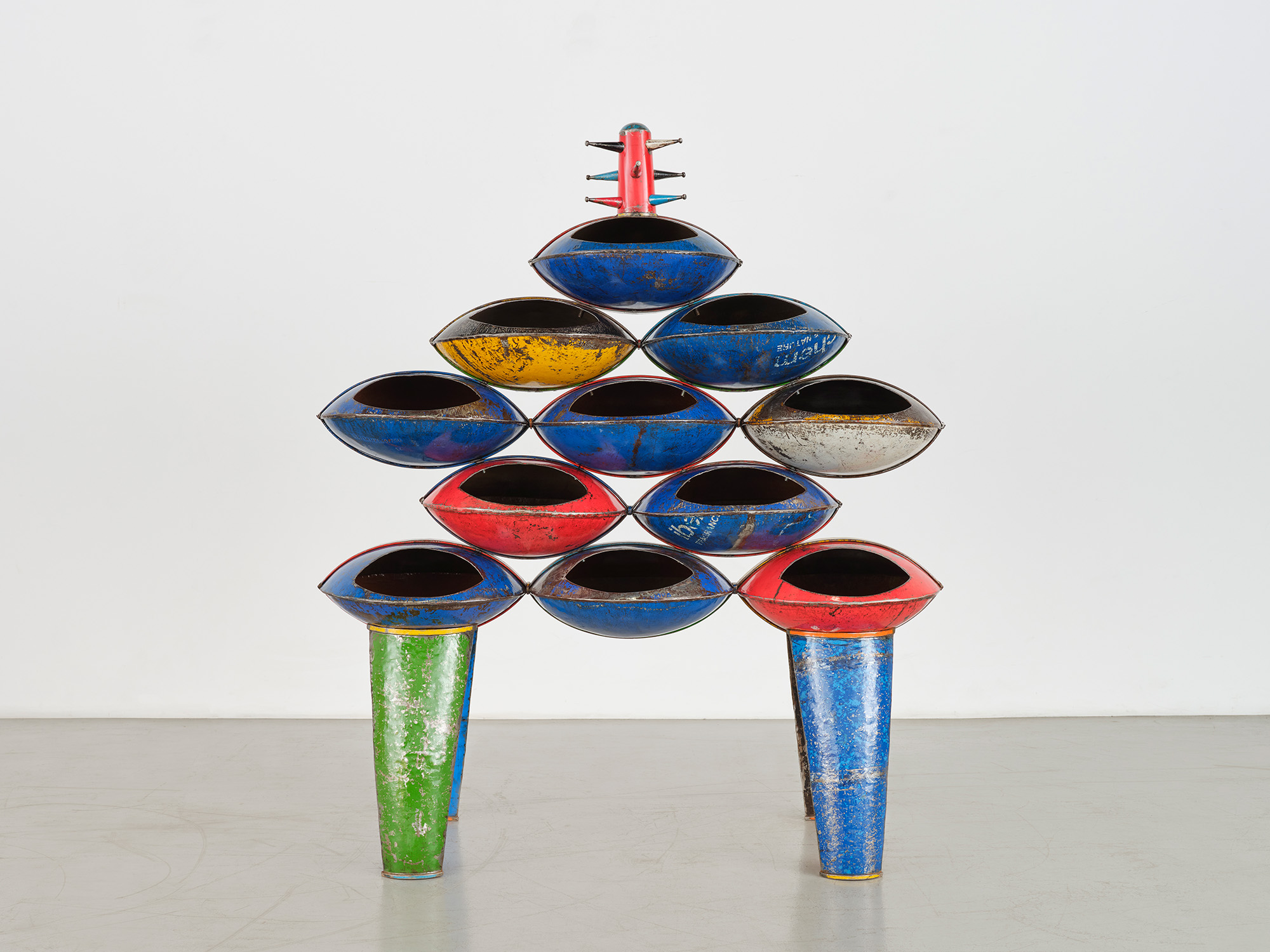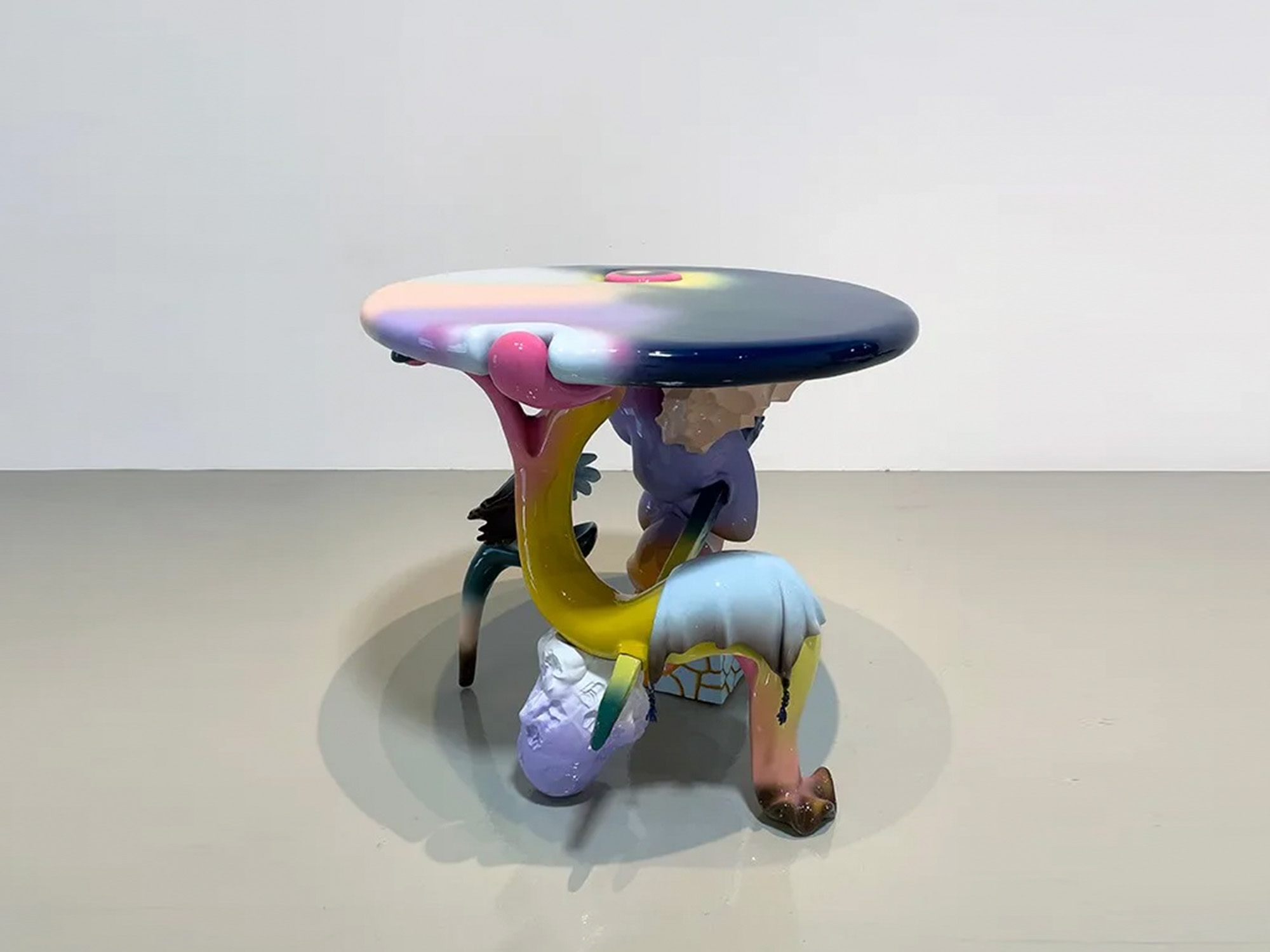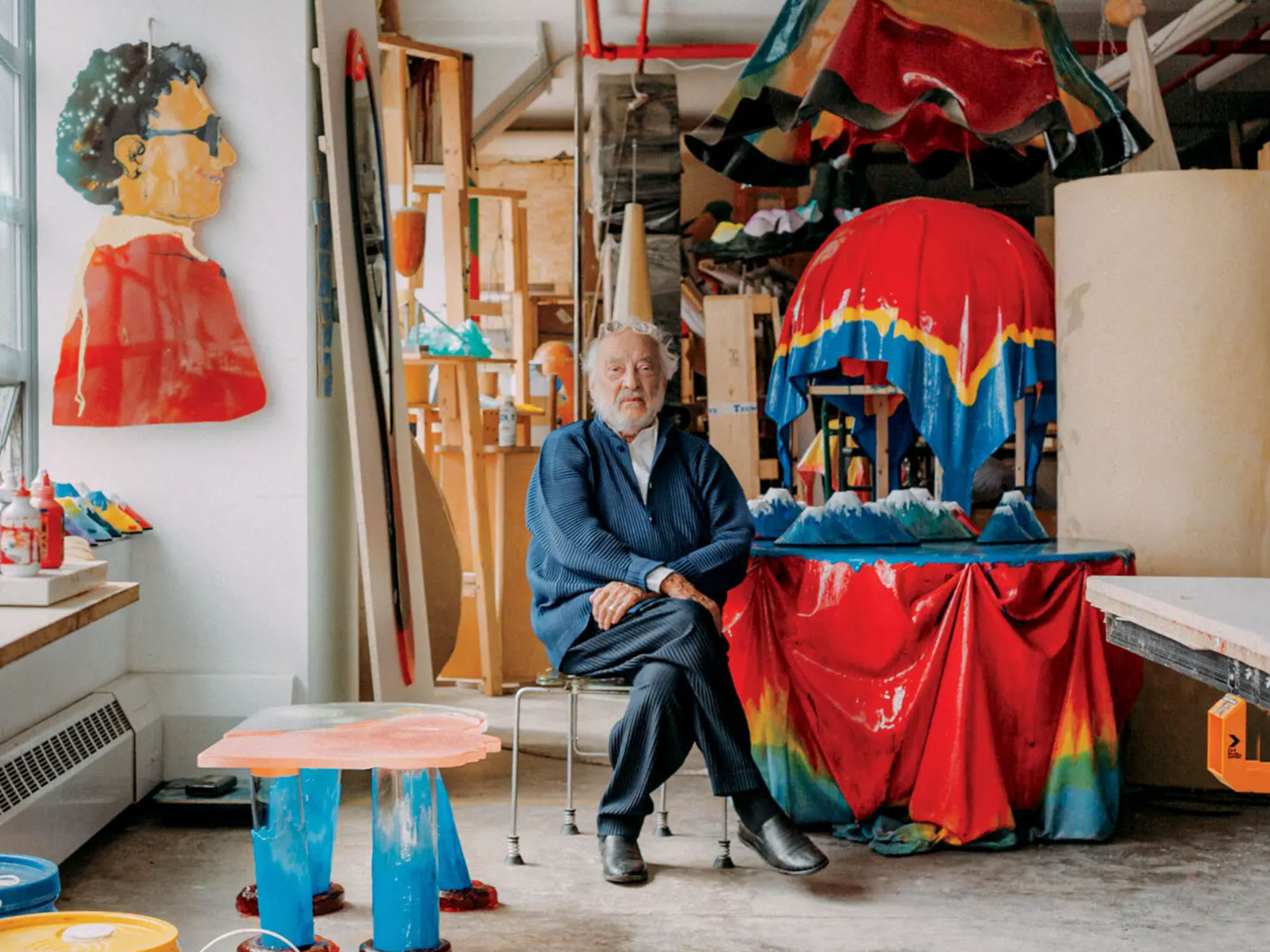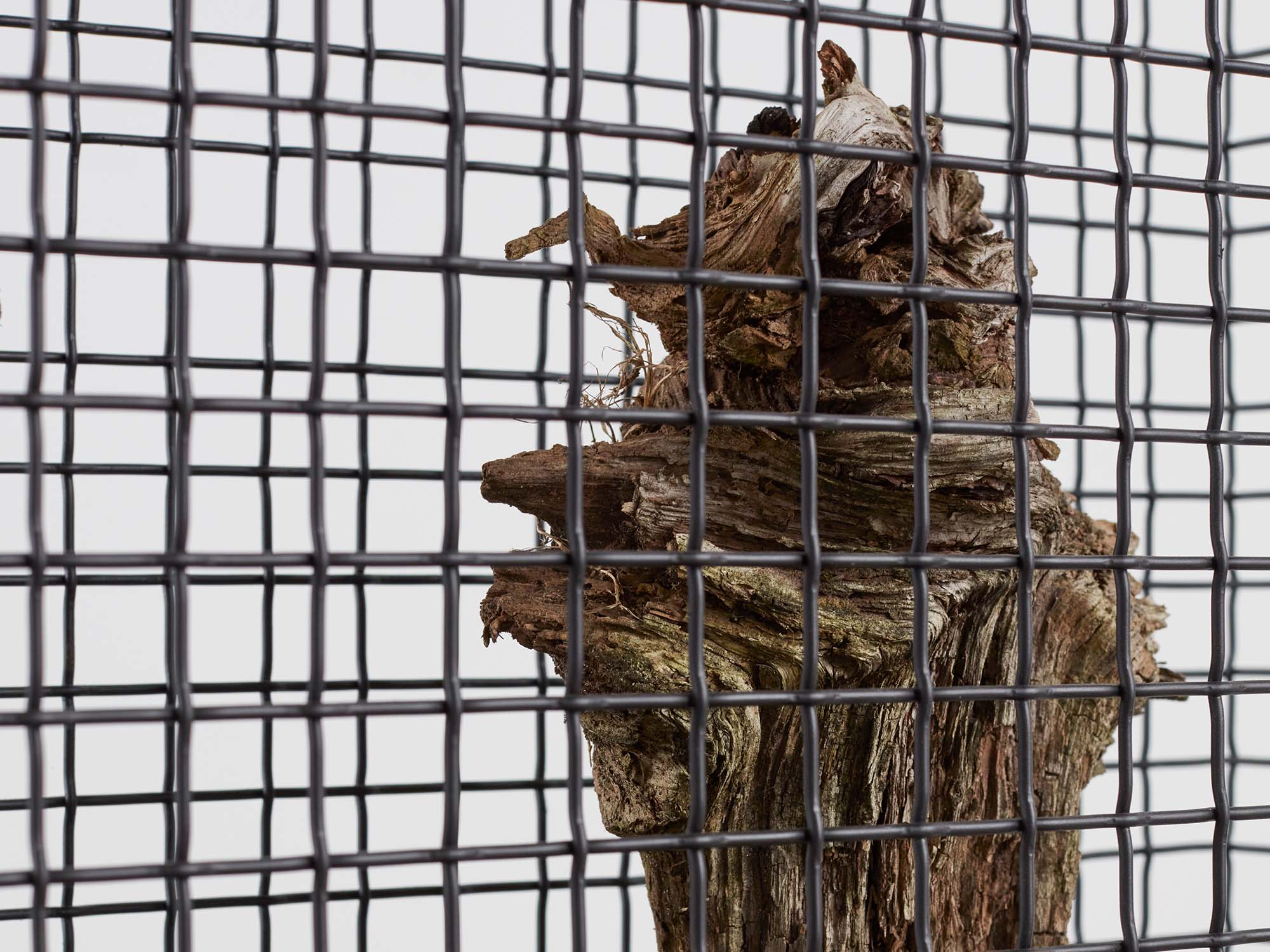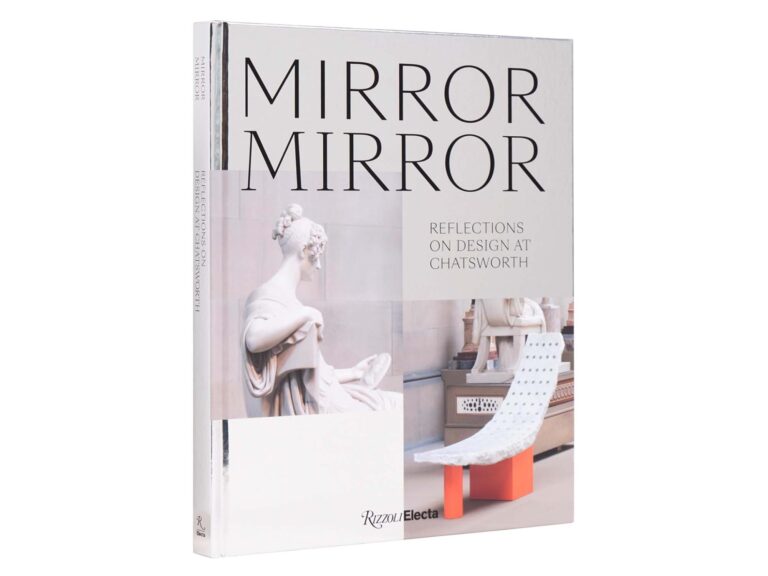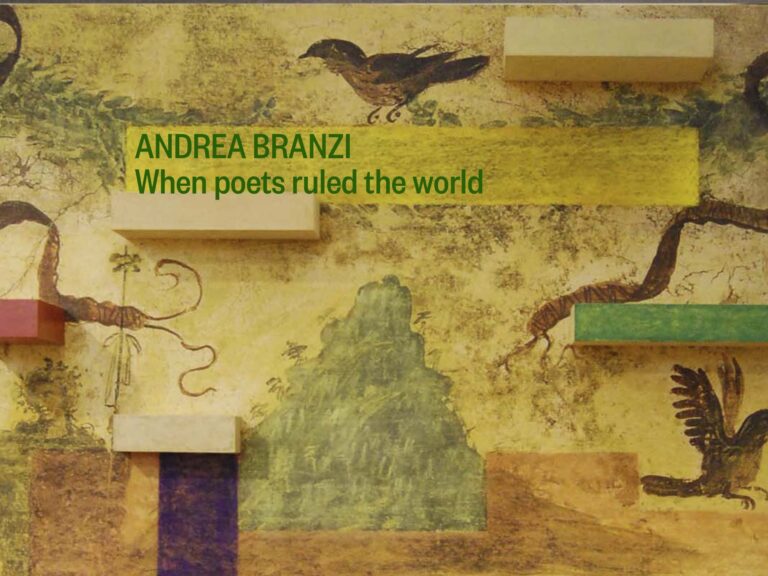By Kay Whitney
Adam Silverman’s work is a monument to risk. Once a producer of functional pottery, he now works at the edge of feasibility where principles of ceramic fabrication are concerned. Potentially ruinous firing techniques, uncontrollable glazing methods, and almost unsustainable forms all expose his work to the possibility of self-destruction. Silverman has referred to his experimental methods as a kind of gambling; every piece he makes is subject to peculiar accretions, various wet or dry techniques involving unconventional throwing and firing, and risky post-firing surface treatments.
A stranger to neither risk nor success, Silverman went through professional phases as an architect and clothing designer before fully committing himself to ceramics in 2002. His design background and passionate regard for the major figures of mid-century design have strongly inflected his work, but he has clearly evolved away from the refined aesthetic that was once important to him. His training as an architect becomes evident in his obsessive focus on the spaces occupied by his objects—siting and presentation are essential to how he creates and defines his work.
In 2019, Silverman began a multi-year project as artist-in-residence at LACMA’s construction site for the new Peter Zumthor building, harvesting materials from the excavated earth, as well as from the new and demolished buildings. The resulting body of work addresses the institution, its history, and its site, situating them within geological and urban contexts. His current Common Ground project takes a similar approach. Clay, water, and wood ash collected from the 50 states, Washington, DC, and the five U.S. territories are mixed together to create two series of works (a set of 56 plates, 56 bowls, and 56 cups, and a group of 56 objects) that reflect on the current divisiveness of the country while also celebrating commonality and shared experience.
Kay Whitney: What is the basis of your attraction to ceramics, and how does it relate to your training as an architect and designer?
Adam Silverman: For me, ceramics is, first and foremost, a physical act. My first attraction and love was how it feels—the clay and the process, the wheel, the fire and heat, the transformation of materials—the simplicity of it all. I discovered architecture in college and switched my focus from clay to buildings, but I continued to make ceramics as a hobby throughout my education in architecture. My formal aesthetic training was in architecture and art within that context. Modernism was the dominant influence—especially later, warmer Modernism, like 1950s and ’60s Corbusier. In addition, I was attracted to then second-generation Modernists like Álvaro Siza and Tadao Ando.
KW: Are the consequences of your architectural training mainly evident in the display of your work?
AS: I think architecture is in my DNA, and it comes through in everything that I make as an artist. The primary issues that interested me in architecture are the same issues that are important to me in the work that I’ve been doing with clay for the last 17 years—namely, the formal exploration of materials and the processes those materials are put through to make something. Geometry, abstraction, proportion, and the expression of the artist are all important to me. Rather than design something and then try to control the materials to realize that thing, I prefer to work without a clear goal and let the materials and processes influence where I go and what I make.
KW: Is mid-century Modernism an influence on your work?
AS: It was very much so when I started working full time as a potter in 2002. I hadn’t studied ceramic history at all in college; but in 2002, I went to a summer program at Alfred University and for the first time was introduced to the work of Modernist potters like Lucie Rie, Hans Coper, Otto and Getrud Natzler, Otto and Vivika Heino, and Axel Salto. It was mind-blowing, like I found out that I had been adopted and looked just like my newly discovered biological parents. I had been making my own version of “Modernist pots” for years, in my garage studio, but I came to those forms and glazes through architecture, not knowledge of modern ceramic history.
KW: You clearly use the wheel as an experimental tool for making forms. Did you start out as a functional potter, and how did your work evolve into sculpture?
AS: Yes, I made exclusively functional ware for the first 20 years as a hobbyist and during the first five years that I was a professional (2003–08). In 2008, I made the first piece where I closed the hole on top of a little saucer shape; my first sculpture. It was terrifying. That led to my first show of sculpture in late 2008 at Tomio Koyama’s gallery in Tokyo. The evolution of the work has been very organic since then. It has become increasingly loose and expressive, more “mature” for lack of a better word. Less gymnastics with colors and textures, and more focus on a smaller vocabulary—trying to do more with less, focusing more on the forms and the firing techniques.
KW: The categories and definitions of art, craft, design, and media have become increasingly blurred. What are your feelings about craft?
AS: Earlier in my career, I spent too much time thinking about, talking about, and worrying about those divisions and where I fit in. I don’t worry about it at all anymore. That being said, each of those words as a part of my practice is important. I believe in the importance of craft within art. My point of access to all art is primarily emotional, then intellectual. I find work without craft or craftsmanship less accessible or important to me. For my work and practice, it was important that I focused on the craft and design components as foundations to the art that came later. I had to make thousands of bowls to get tight enough and skilled enough to then loosen up from a place of security. I wanted to avoid hiding behind some pseudo-notion of wabi-sabi in order to justify bad craftsmanship.
KW: Your work has been predicated for a long time on the exploration of context in the display and experience of pottery. You have investigated this problem in a variety of ways over the years—through site-specificity, with groupings of works within existing spaces, and with works placed within custom-made “furniture” such as boxes and shelves, which confine, contain, and fix. Historically, ceramic artists approached the exhibition of their work by elevating the individual object, whether functional or sculptural. What influenced your interest in the group/collection over the single, autonomous object?
AS: I understand what you are saying, but I’m not sure that I would agree with one over the other. I very much enjoy and focus on the individual object. I did a show in Tokyo called “Blue” (2016) of individual blue works on white pedestals. They read as an extended family, but primarily as individual pieces. In Brussels in 2018, I had another show of individual pots on pedestals, and the gallery did the installation.
KW: “Occupation” (2018) focused more on architectural elements. There were two partial walls made of wood and Sheetrock; in each, a cutout circle rotated 180 degrees to the horizontal and served as a base for a group of ceramic forms. One structure was painted white, and its ceramics were glazed white; the other wall was black, with black-glazed ceramics. They were linked by a large, x-shaped centerpiece made from black-stained lumber raised on cinderblocks, which supported a number of mostly brown vessel forms. The ceramic elements were all altered in some way, individualized and made resolutely unsymmetrical. What determined your choice of a circle and an “x”? Why use black and white? These are heavily metaphorical choices, particularly considering the title. Did you have a specific opposition in mind?
AS: The two black and white wall pieces were intended to stand on their own and as part of the show as a whole. They conjure many things in my mind: the idea of uniforms or teams or sides is inevitable, groups of people who wear uniforms as signifiers, by choice or not—people in the military, cults, sports, police, dancers, martial artists, schools, workers/tradespeople. I also think of game pieces, species of insects, animals, plants, or fish, as well as buildings, a village. The forms could also have many references—humans, plants, animals, microscopic figures, unknown figures, figures from art history, game pieces, religious icons, funerary objects, food-oriented objects. Those objects, or figures, are frozen in motion, marching, dancing, rioting, standing, resting, dying, laying, crawling, waiting—like a photograph of a dance party. To me, the installation has a vaguely religious smell to it, in the most abstract sense—the religion of Modernism maybe, of geometry—Merce Cunningham, Barbara Hepworth, Ellsworth Kelly, Jasper Johns, Corbusier.
Each of the wall pieces contains 26 figures (the same number of letters in the English alphabet). Twenty-four of them are somewhat anonymous, and two are larger, more individualistic and expressive—they represent “I” and “a,” the only two letters that are also words, and they can also be seen as the leaders of the group, the parents, or elders.
The large “x” in the middle is made of 20-foot-long, burnt 6-by-16-inch beams. They are meant to be bridges connecting the two large wall pieces; like the walls, they employ basic construction materials and act as architecture for the ceramics to occupy. They reference a promenade (like the Highline), a catwalk, a factory conveyor belt, a road. I think of the forms on the “x” as individuals meeting there; their forms or numbers could be variable. Many of the pieces in that part of the show were made during summers in Rhode Island, and they use a lot of local materials (beach clays, seaweed, salt, shells, salt water, corn husks, wood) and a very rough and crude gas kiln.
KW: A great deal of your previous work has been gorgeously colored, with almost theatrical glazing. Your more recent work, however, seems to be less focused on surfaces.
AS: In the more recent work, I have been suffering from chromophobia. For the last couple of years, I’ve been focusing much more on using the forms to do the work and asking more of the forms, the kilns, and the materials. I’m trying to do more with less.
KW: How would you characterize the progression and development of your work?
AS: It has moved from very tight and controlled, almost timid, and “attractive” functional work to increasingly expressive surface textures and colors on pure geometrical forms like spheres and eggs, to much more relaxed, expressive, and personal work. If you consider that all art can be considered some form of autobiography, I guess I’ve gone from a pretty uptight teetotaler to a bit of an old drunk.
